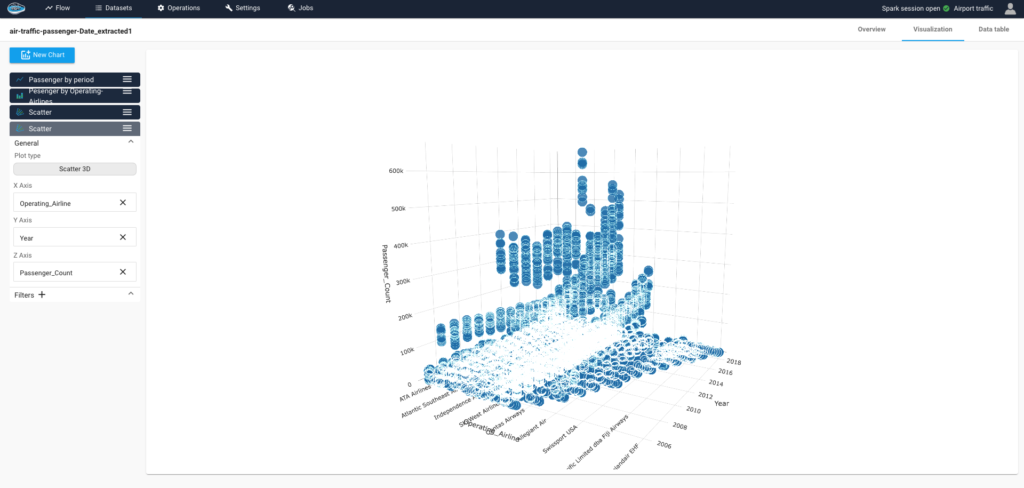How Law Firms Use RAG to Boost Legal Research RAG...
Read MoreAccording to a study by Accenture, organizations that are strategically scaling AI report nearly 3X the return from AI investments compared to companies pursuing siloed proof of concepts. As technology develops and matures, using scalable artificial intelligence (AI) is becoming more and more crucial within organisations. The ability of an AI system to handle growing amounts of data, users, and complexity without significantly altering the underlying architecture is referred to as scalable AI. In this article, we’ll look at the advantages of scalable AI use as papAI platform within organisations and why it’s important.

Current infrastructure and AI success
Find out in this latest study by Fivetran which surveyed 500 senior IT and data science professionals in July 2022.
Organizations have operational systems in place for a wide variety of capabilities
Supply chain management, manufacturing and maintenance, and product lifecycle management are the three most likely areas when examining the capabilities that organisations have operational systems in place for. Although it’s encouraging that organisations have these systems in place, it’s crucial to comprehend how they are using the data they are gathering from them.

Almost all organizations are collecting and utilizing the data from their operational systems
Organizations must collect data, and many of them seem to be making good progress in this area. However, just because an organisation is using all of its data doesn’t mean that they are doing so effectively, in fact, some may only be beginning their journey in this area. Data can be an extremely important tool for processes like forecasting and decision-making within organisations if used properly. Therefore, it’s encouraging to see that data is being firstly gathered and used, but to what extent?

The extent to which organizations are collecting and utilizing the data from their operational systems varies by sector
Because of a variety of factors, public sector organisations are the least likely to be fully utilising data from their operational systems. It’s possible that obstacles exist, such as a lack of internal skills, a limited budget, a lack of time, or even outdated infrastructure. Utilizing this data might not be a top priority for everyone. However, in those cases where it is evident, like in the media and manufacturing industries, they probably have access to enormous amounts of data, which, of course, is only useful if it is presented in a comprehensible and practical manner.

What does Scaling AI means?
Many businesses have had success with AI use cases or pilots. However, they are having trouble moving toward scaling AI, which entails using technology throughout the company and maximising its potential. A scalable AI solution must work with data in real-time as it is created, often to the tune of millions of records per day. This is in contrast to a POC or Pilot project of an AI-based solution, which only interacts with a tiny portion of data. This calls for changing a company’s operational paradigm, taking a number of top-down and bottom-up steps, embracing a new culture, and committing a sizable money.
What are the benefits of using papAI platform as a scalable AI solution?
- Handling expansion: Managing growth is one of the key reasons businesses want a scalable AI platform. The volume of data that has to be processed, the number of users that need to use the platform, and the complexity of the issues that need to be resolved all increase along with the size of a firm. This expansion may be accommodated by a scalable AI platform without requiring total reconstruction or redesign.
- Cost-effectiveness: A scalable AI platform may be more economical than one that is not. Developing a scalable platform from the start can be more expensive than building one that is not, but as the firm expands, it can cost less in the long term. It enables the firm to save money by avoiding the expense of revamping or rebuilding the platform as the company expands.
- Improoved performance: Scalable AI platforms have the potential to enhance the performance of AI models. The performance of the models may deteriorate as the data volume and problem complexity rise. This growth in data and complexity may be managed by a scalable platform without affecting performance.
- Better decision-making: Scalable AI platforms give businesses the capacity to analyse more data and generate more precise forecasts, which enables them to make better decisions. This may result in increased productivity, cost savings, and higher client satisfaction.
How papAI platform helps you to scale your AI solution
1- simplify the data preparation
papAI platform can facilitate data preparation in your company by providing tools and techniques that make it easier to work with larger datasets and more types of datasets. This can include features such as:
- Data integration: papAI can help you integrate data from multiple sources because it’s an intuitive AI platform that allows you to quickly and easily integrate your data at any point during the prototyping of your predictive model, such as structured data from a SQL database and unstructured data from social media or other sources. This can make it easier to work with data from different sources and get a more complete picture of the data.
- Data cleaning: papAI can also help to clean and preprocess data, removing errors, outliers, and missing values. This can help to improve the quality of the data and make it more suitable for analysis , also for your own personalized use and visualization, you have a great latitude to customize your code design via Python.
- Data transformation: papAI platform help to transform data into the format required for analysis. For example, it can convert text data into numerical values, or group data into categories.
- Data Visualization: papAI can also provide data visualization tools that make it easier to understand and explore the data through a 2D, 3D view and geographical plots. Compare several models for a better vizualisation and easily access the visualization models of your collaborators.This can help to identify patterns and trends in the data, which can inform decision-making.

-Example of Data visualization on papAI platform Scatter 3d-
2- Assist model training and scaling experiments
Scaling experiments and model training may be made easier with the help of papAI platform because it offers a centralised and automated method of doing so. The platform can automate the tedious and time-consuming processes of model selection, hyperparameter tweaking, and data preparation by using an AutoML engine. Data scientists and engineers may now concentrate on more challenging and worthwhile activities like feature engineering and model interpretability.
A scalable AI as papAI platform further enables users to create unique models using coding languages like Python or Scala. As a result, data scientists and engineers may have more control over the models that are trained and apply their domain-specific knowledge to develop models that are suited to the organization’s particular requirements.
papAI platform makes it simple to deploy models in real-world settings. Once a model has been trained and certified, it may be easily accessed and used by other teams for their own applications by being deployed to the platform’s model management system.

– Example of training data on papAI platform –
3- Scaling for Production and Monitoring during Deployment
papAI platform can facilitate scaling for production and monitoring during AI deployment by utilizing a multi-node architecture and by increasing the speed of scoring models.
- Multi-node architecture: A multi-node design enables the papAI to split the workload over several computers, enabling it to process many requests at once. This is especially crucial in circumstances when there are lots of queries and real-time responses are needed, such as production settings.
- Speed of scoring models: Using technologies like GPU acceleration, which enables quicker processing of complicated models, the speed of scoring models may be greatly boosted. This is especially significant in production settings where quick decision-making depends on reduced latency.
- Monitoring: A scalable AI platform as papAI makes it simple to keep tabs on the effectiveness of the used models. This involves tracking the models’ predictions and drift as well as keeping an eye on how much CPU and memory are being used. This makes it possible for teams to recognise and handle any difficulties that can emerge throughout the deployment process immediately.
- Deployment: The deployment of models into production is also made simple by a scalable AI platform. Once a model has been trained and certified, it may be easily accessed and used by other teams for their own applications by being deployed to the platform’s model management system.

– Example of evaluation of the model on papAI platform –
Conclusion
In conclusion, a scalable AI platform can facilitate scaling experimentation and model training by providing an automated approach to the process, enabling users to write custom models, allowing for parallel experimentation and model training, and making it easy for models to be deployed into production.
Interested in discovering papAI ?
Our commercial team is at your disposal for any question.
How RAG Systems Improve Public Sector Management
How RAG Systems Improve Public Sector Management The most important...
Read MoreScaling RAG Systems in Financial Organizations
Scaling RAG Systems in Financial Organizations Artificial intelligence has emerged...
Read More

